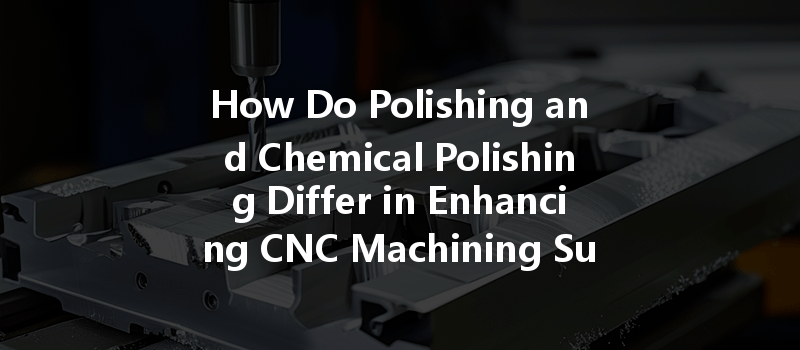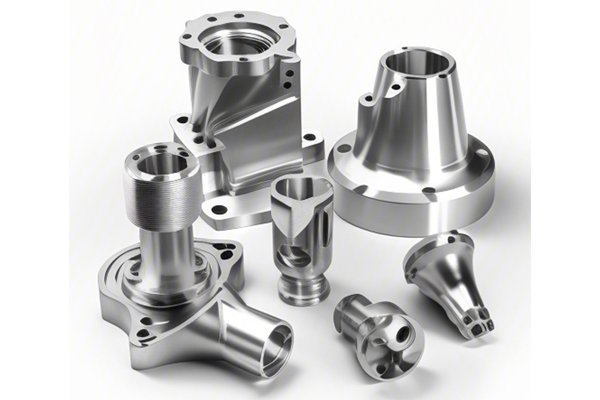Did you know that the surface finish of a machined part can affect its performance, longevity, and overall usefulness in a specific application? According to a study conducted by the National Institute of Standards and Technology (NIST), up to 80% of the component failures in engineering applications can be traced back to surface defects. This alarming statistic highlights the importance of surface finish in CNC machining, prompting manufacturers to explore advanced methods of achieving superior results.
In the world of CNC machining, achieving a high-quality surface finish is not merely a matter of aesthetics; it can significantly influence fatigue strength, corrosion resistance, and wear properties. Among several methods available for achieving this goal, polishing and chemical polishing stand out as prominent techniques. In this blog, we will explore the comparative roles of polishing and chemical polishing in enhancing CNC machining surface finishes, delve into their processes, advantages, disadvantages, and suitable applications, and provide a detailed look at choosing the right approach for your specific needs.
Understanding CNC Machining Surface Finish
CNC (Computer Numerical Control) machining is a manufacturing process that utilizes computer-controlled tools to produce intricate parts with high precision. The surface finish—defined by factors like roughness, flatness, and gloss—plays a critical role in determining how well a part functions and how long it lasts. In CNC machining, surface finish is typically measured using specific parameters such as Ra (roughness average), Rz (average maximum height of the profile), and Rmax (maximum height of the profile).
A Closer Look at Polishing Techniques
Polishing is a mechanical process aimed at improving the surface finish of a workpiece. This technique often involves the following steps:
Advantages of Polishing:
Disadvantages of Polishing:
An Exploration of Chemical Polishing
Chemical polishing (or chemical etching) involves using chemicals to achieve a smoother surface finish and can be summarized as follows:
Advantages of Chemical Polishing:
Disadvantages of Chemical Polishing:

Where to Use Each Technique
Selecting between polishing and chemical polishing involves understanding your specific needs:
Integrating Both Approaches
Interestingly, many manufacturers find success in utilizing both polishing techniques. For example, mechanical polishing can be used as an initial step to remove large imperfections and shape the part, while chemical polishing is used as a secondary process to achieve a high-quality finish. This hybrid approach allows manufacturers to take advantage of the strengths of both methods while mitigating their weaknesses.
Key Factors Influencing Surface Finish in CNC Machining
While polishing techniques significantly impact surface quality, there are several additional factors to consider:
The Future of CNC Machining Surface Finishing
As CNC machining technology advances, so do the methods employed for achieving excellent surface finishes. Innovations in nanotechnology, surface engineering, and digital monitoring are transforming how manufacturers approach polishing techniques. These enhancements will likely lead to more efficient processes, improved outcomes, and ultimately, the creation of parts with superior performance metrics.
To summarize, both polishing and chemical polishing offer distinct advantages and disadvantages in enhancing the surface finish of CNC machined parts. Polishing provides versatility, accessibility, and aesthetic improvements, while chemical polishing promotes uniformity and efficiency—particularly beneficial in high-volume production.
The selection of the appropriate polishing technique should be strategically aligned with the specific application, material properties, and performance requirements of the workpiece. Understanding the implications of both methods can lead to more informed decisions, contributing to the successful manufacturing of durable and high-performance components.
This blog serves as a reminder that achieving quality in surface finishes isn’t simply about improving appearances; it’s about enhancing functionality, longevity, and reliability in practical applications. As you consider your own machining processes, investing time in understanding these techniques and staying informed about advancements will undoubtedly prove valuable in the long run. By prioritizing surface quality, you maintain a competitive edge in an increasingly complex manufacturing landscape.






